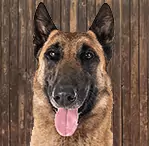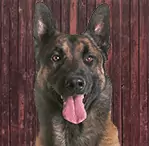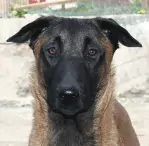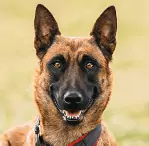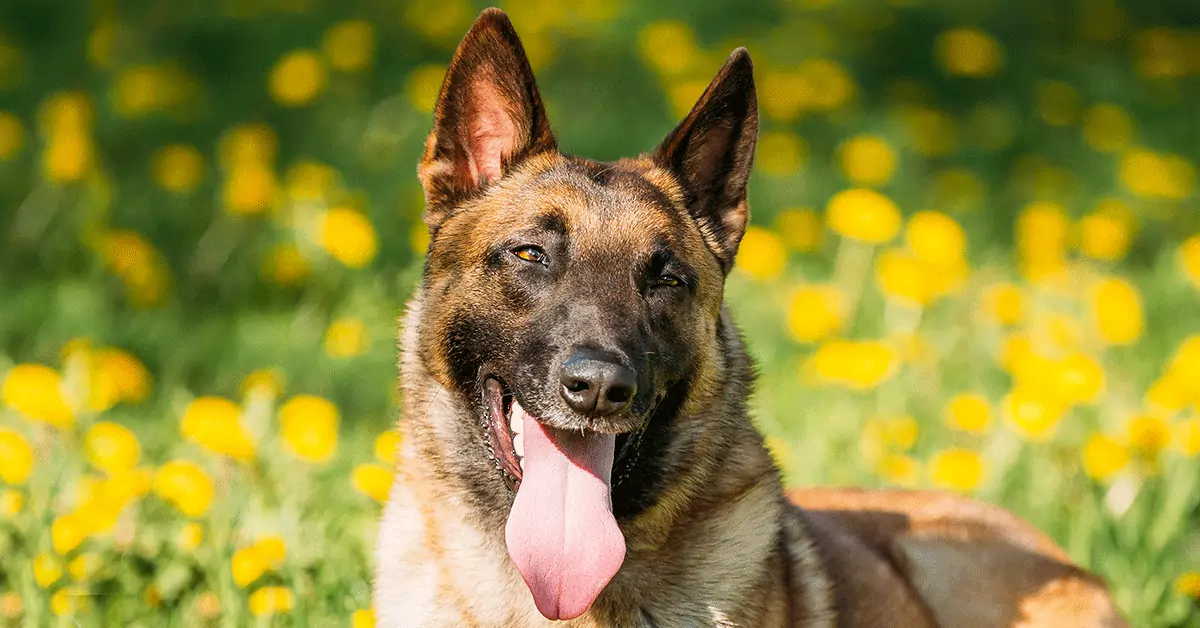
Meet the Belgian Malinois
High Doggy I.Q.
Top Working Dog
Protective Pooch
My Many Looks
My Breed Characteristics
Furbulous Fact
As I Grow Up
History of My Breed
Care Tips
Training Tips
Personality
Loyal
Hard-Working
Smart
Group
Herding
Origin
Belgium
Life Span
14-16 Years
Breed Popularity
#37 of 195
Height Range
22-26 Inches
Weight Range
40-80 Pounds
Coat Details
Type
Short
Texture
Smooth and Hard
Features
Weather Resistant; Dense Undercoat, Double Coat
Colors
Fawn, Fawn Sable, Mahogany, Red, Red Sable, Black, Brindle, Cream, Cream Sable, Gray, Gray Sable, Li
Hypoallergenic
Cost to Buy
$595-$2,000
Lifetime Care Cost
$27,855
My Many Looks
My Breed Characteristics
Furbulous Fact
As I Grow Up
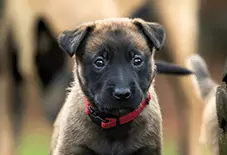
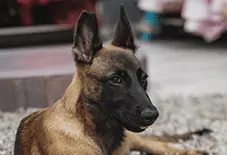
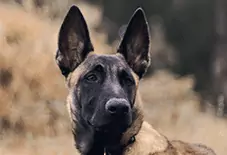
History of My Breed
Care Tips
from Dr. Jessica Greenberg, Associate VeterinarianWatch for signs of Pannus.
Malinois are predisposed to Pannus, also known as superficial keratitis, which is a hereditary condition that results in inflammation of the corneas. Early detection and treatment by your vet can preserve your pup’s ocular health. Exposure to UV light is also aggravating, so employing sunglasses fitted for your dog is advised. -Dr.MarcElie,Veterinarian
Be aware of signs of bloat and treat accordingly.
As a large breed dog, Belgian Malinois are at a greater risk of suffering from bloat (GDV). This happens when the stomach fills with air causing pressure to build, which stops blood from returning to the heart. If the stomach flips, it deprives the pancreas of oxygen which then produces harmful toxins. This condition can be largely prevented by a procedure called gastropexy, which prevents the stomach from moving up to the chest. -DrJessicaGreenberg,AssociateVeterinarian
Take your dog for dental check-ups.
Dental disease impacts most dog breeds. Dogs should be taken to the vet for exams, including dental exams, every six months to a year to determine when professional cleanings are needed. -DrJessicaGreenberg,AssociateVeterinarian
Training Tips
from Dr. Jessica Greenberg, Associate VeterinarianBe respectful with your training.
Training for any dog should be done in a respectful manner, but the Malinois tend to be very smart and very sensitive, so they don’t respond well to certain training techniques. They’re very suspicious of people and things they aren’t familiar with, so ease them into it and find a training tactic that works. With their high level of trainability, they’ll catch on quickly. -GeorgieYoung,CertifiedProfessionalDogTrainer
Experienced owners are better suited for this breed.
Belgian Malinois are beautiful dogs, however it is not the ideal breed for a novice dog owner or an inexperienced handler. Owners should ideally have had prior experience with similar breeds before owning a Belgian Malinois. Owners need to be calm, consistent, and "in charge." That includes knowing how to create boundaries and opportunities to make their dogs think, and create leadership opportunities for themselves. -TommyMeyerhoffer,CertifiedDogTrainerandBehavioralTherapist
Give your Malinois a lot of physical and mental exercise.
This breed can be high energy and very intense. They are also incredibly physical and athletic. Without an owner's commitment to provide the dog with the exercise, mental stimulation, and leadership it requires, owning this breed can be a challenge. -TommyMeyerhoffer,CertifiedDogTrainerandBehavioralTherapist
My Many Looks
My Breed Characteristics
Furbulous Fact
As I Grow Up
History of My Breed
Care Tips
Training Tips
-
Personality
Loyal
Hard-Working
Smart
-
Group
Herding
-
Origin
Belgium
-
Life Span
14-16 Years
-
Breed Popularity
#37 of 195
-
Height Range
22-26 Inches
-
Weight Range
40-80 Pounds
-
动物皮毛
Type
Short
Texture
Smooth and Hard
Features
Weather Resistant; Dense Undercoat, Double Coat
Colors
Fawn, Fawn Sable, Mahogany, Red, Red Sable, Black, Brindle, Cream, Cream Sable, Gray, Gray Sable, Li
-
Hypoallergenic
-
Cost to Buy
$595-$2,000
-
Lifetime Care Cost
$27,855
